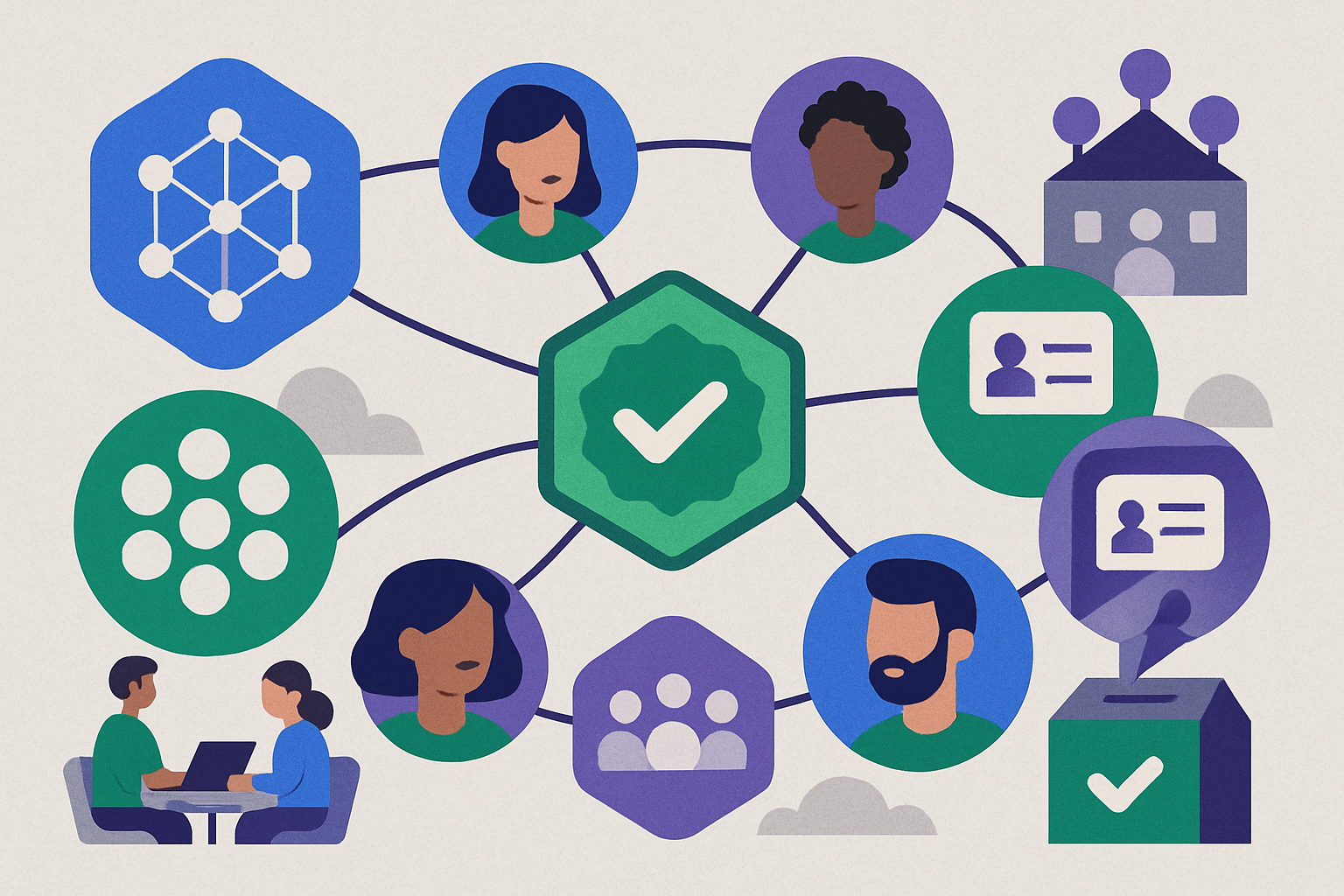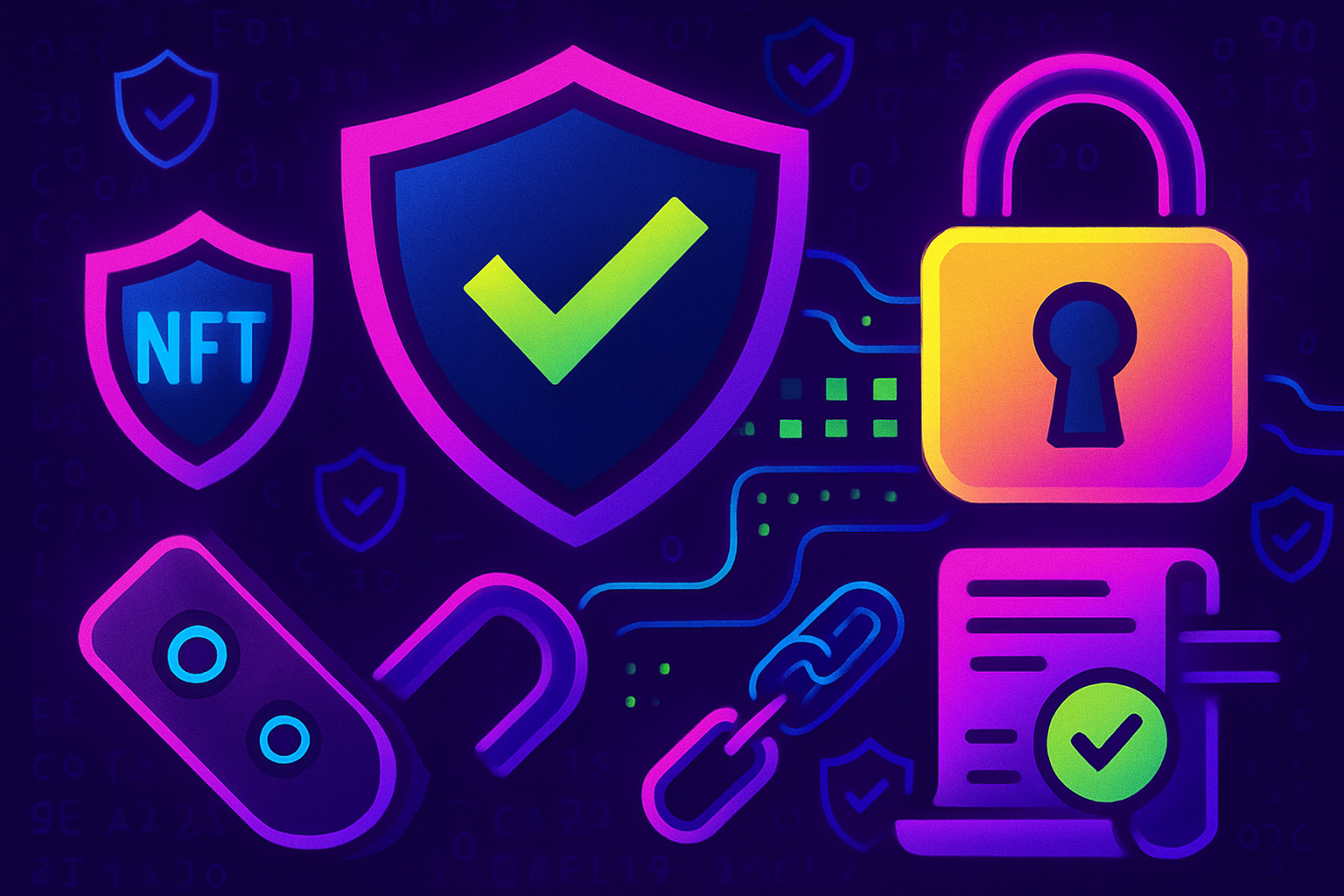
DAO contributor badges are quickly becoming the backbone of transparent, merit-based governance in web3. In 2025, as decentralized organizations scale and diversify, the need for verifiable, on-chain credentials has never been more urgent. Governance NFT Badges empower DAOs to recognize real participation and align voting power with actual contributions, not just token holdings. If you’re ready to streamline your DAO’s contributor recognition and governance, here’s how to issue and manage these badges effectively.

Step 1: Define Contributor Roles and Badge Criteria Aligned with DAO Governance Goals
Before minting anything on-chain, set the foundation: define clear roles and badge criteria that reflect your DAO’s unique governance structure. Ask yourself: What does meaningful contribution look like in your community? Are you rewarding technical development, community moderation, proposal drafting, or event organization?
For maximum transparency and scalability:
- Create objective requirements for each badge, such as completed projects, successful proposals, or verified event participation.
- Align badge utility with governance rights (e. g. , voting weight), access privileges (like gated Discord channels), or special recognition (like annual awards).
- Document criteria publicly, so contributors know exactly how to earn their badges and what each one represents.
This clarity sets the stage for a fair and motivating system where every member understands the path to greater responsibility, and reward. For a deeper dive into aligning badges with participation rewards, check out this guide on boosting DAO engagement with NFT badges.
Step 2: Select and Integrate a Secure NFT Badge Issuance Platform
The next step is all about choosing the right infrastructure. Your badge issuance platform must be secure, auditable, and tailored for DAOs. Platforms like Governance NFT Badges or Karma GAP are purpose-built for this, offering seamless minting flows, robust permission controls, and on-chain verification that stands up to scrutiny.
- Security first: Ensure your chosen platform is regularly audited and has a track record of safe smart contract deployments.
- User experience: Look for intuitive dashboards that allow both core teams and contributors to track badge status in real time.
- Ecosystem integration: Make sure your platform supports plug-and-play connections to popular governance tools like Snapshot or Tally, so voting rights tied to badges are automatically enforced.
Selecting the right issuance platform isn’t just about tech; it’s about trust. The right partner will help your DAO scale its recognition system without sacrificing transparency or security. For best practices on choosing an issuance solution, and avoiding common pitfalls, see our resource on creating and distributing DAO contributor badges as NFTs.
Step 3: Mint, Distribute, and Manage Badges On-Chain with Ongoing Verification Tools
This is where strategy meets execution. Once your roles are defined and your platform is integrated, it’s time to mint those coveted badges, and keep them up-to-date as contributors evolve within your organization.
- Batch minting: Efficiently issue multiple badges at once when onboarding new members or after major events.
- Airdrop and claim flows: Allow contributors to claim their own badges via secure links or wallet authentication, no manual distribution headaches required.
- Lifelong management: Use built-in verification tools to periodically review badge holders’ eligibility; revoke or update badges if roles change or criteria are no longer met.
The result? A living system of verifiable credentials that grows alongside your DAO, driving engagement while keeping governance transparent. For more insights into ongoing management strategies (including revocation protocols), explore our detailed walkthrough on transparent contributor recognition using NFT badges.
Maintaining badge integrity is crucial as your DAO scales. Ongoing verification ensures that badges remain a true reflection of active participation, not just historical achievements. This isn’t a set-and-forget process: think of it as continuous curation of your community’s reputation layer. With platforms like Governance NFT Badges, you can automate eligibility checks and even schedule periodic audits, so expired or misused badges are promptly revoked. This keeps your contributor roster current and credible, an absolute must for DAOs aiming for long-term legitimacy.
Best Practices for Scalable DAO Contributor Badge Programs in 2025
Let’s zoom out and look at how leading DAOs are optimizing their badge systems for maximum impact:
- Transparency is non-negotiable. Publish badge criteria, issuance records, and revocation events on-chain or in public dashboards. This builds trust and invites healthy scrutiny from your community.
- Automation > manual labor. Use claim portals, wallet authentication, and automated eligibility checks to streamline distribution and minimize admin overhead.
- Dynamic roles and permissions. As contributors level up or pivot to new responsibilities, ensure badges (and their associated governance rights) update accordingly. Soulbound badges are especially powerful here, they’re non-transferable by design, providing a tamper-proof record of each member’s journey.
- Integrate with governance tooling. Platforms like Snapshot can read badge ownership directly from the blockchain, assigning voting power automatically. No more spreadsheets or manual whitelists!
This approach turns your DAO’s badge program into a living system, one that adapts as members grow, roles shift, and projects evolve. The result? A vibrant meritocracy where recognition is earned in real time.
The Future: Contributor Badges as Web3 Credentials
The days of static Discord roles or anonymous forum rep are fading fast. In 2025, contributor badges minted via platforms like Governance NFT Badges have become the gold standard in web3 governance credentials. They’re portable across ecosystems, verifiable on-chain, and increasingly interoperable with other decentralized tools, from DeFi reward systems to cross-DAO collaborations.
This means your contributors can showcase their impact beyond just one organization, building personal reputations that unlock new opportunities across the web3 landscape. Imagine a world where your DAO’s top developer or most trusted moderator is instantly recognized (and rewarded) wherever they go next!
Ready to Launch Your Own DAO Badge Program?
If you’re ready to supercharge engagement and transparency in your decentralized organization, start by revisiting these three essential steps:
- Define Contributor Roles and Badge Criteria Aligned with DAO Governance Goals
- Select and Integrate a Secure NFT Badge Issuance Platform (e. g. , Governance NFT Badges or Karma GAP)
- Mint, Distribute, and Manage Badges On-Chain with Ongoing Verification and Revocation Tools
The right strategy will empower your members, and future-proof your DAO’s reputation in an increasingly competitive ecosystem. Want more actionable frameworks? Check out our guides on issuing governance NFT badges for contributor recognition, or explore how leading DAOs use badges to streamline voting rights in our deep dive on governance badge best practices.






